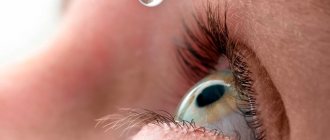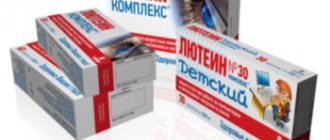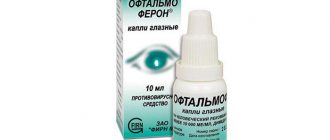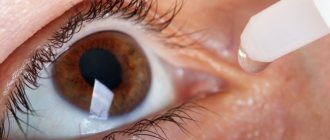Symptoms of stye
Symptoms that accompany the appearance of stye on the eye:
- The eyelid in the area of inflammation begins to itch.
- Pain occurs when blinking or when trying to touch the eye.
- The eyelid swells.
- The lacrimation intensifies.
- It seems to a person that something foreign has entered his eye.
- A yellow blister appears on the eyelid. It becomes noticeable on the 3rd day from the appearance of the first signs of barley.
- After 4-5 days, the stye opens and pus comes out.
If a person’s immunity is depleted, then the body temperature may rise. Sometimes general symptoms of intoxication of the body occur. The patient begins to have a headache, and the lymph nodes increase in size. A similar clinical picture develops in children and in people with frequently recurring styes.
General recommendations for use
The pharmaceutical industry offers a wide range of medications that can be purchased at pharmacies without a prescription. Still, it will be better if the remedy is chosen by an ophthalmologist, taking into account the course of the disease. The doctor has the necessary knowledge base that will help him choose an effective drug.
Eye drops for stye on the eye are divided into two groups:
- antibiotic products. Act directly on the causative agent of the disease;
- drugs based on sulfonamides. They have both bactericidal and bacteriostatic effects. This means that such drops can not only stop the development and growth of pathogenic microflora, but also completely neutralize it.
Antibiotic eye drops for children
For barley, medications are used in the form of ointments and drops. Drops are the most preferred option. Their use is less traumatic and does not cause severe discomfort. Applying ointment for barley in children can be very difficult.
Before talking about which medicine for styes on the eye to give preference to, it is important to understand the basic rules for using these drugs. Before the procedure, be sure to wash your hands with soap. A new pipette should be selected for each drug. During instillation, the pipette should not touch the mucous membrane of the eye. If you are using several eye drops at the same time, remember to leave a fifteen-minute interval.
Let's look at step-by-step instructions for using eye drops:
- Sit comfortably and tilt your head back slightly.
- Slowly pull back the lower eyelid and roll up the eyeball.
- Place one or two drops into the conjunctival sac. It still won’t accommodate more.
- Close your eyes and sit in this position for five minutes. It is recommended to gently massage the inner corners of the eye.
- Rinse the used pipette, boil and dry.
Eye drops for stye on the eye should be applied with washed hands.
Barley stages
Barley goes through the following stages of development:
- Infiltrative stage.
At this time, a person experiences itching and burning in the eyelid area, it becomes swollen. This stage lasts no more than 3 days.
- Stage of suppuration.
If barley does not resolve, then an abscess forms on the eyelid. It is round, transparent, filled with whitish contents.
- Breakthrough stage.
The capsule with pus either ruptures on its own or is opened by a doctor. The pus comes out and may ooze for several more days.
- Healing stage.
A crust forms over the stye, under which the skin regenerates.
Causes of stye
Barley appears on the eye due to Staphylococcus aureus. This microbe always lives on human skin and hair, as it belongs to the opportunistic flora. Streptococci rarely provoke the appearance of barley. These microorganisms begin to actively multiply when a person’s immunity decreases.
Therefore, the causes of barley may be the following:
- Prolonged exposure to cold on the body.
- Stress, illness, overwork, excessive physical activity, poor nutrition, adherence to strict diets. All these factors negatively affect the state of the immune system.
- Vitamin deficiency in the body.
- Diabetes mellitus, in which the blood supply to the organs of vision is impaired.
- Diseases of the digestive system. At the same time, the body does not fully absorb nutrients.
- The presence in the body of Staphylococcus aureus species resistant to antibacterial drugs.
- The presence of a chronic inflammatory process in the body, for example, caries, adenoids, tonsillitis.
- Hereditary predisposition.
- Infection of the body with helminths.
- Hygiene errors. The infection can be brought into the eyelid by dirty hands.
- Use of contact lenses. By themselves, they cannot cause the formation of barley, but in combination with other risk factors they can lead to inflammation.
Prevention of meibomitis
To protect yourself from stye, you need to periodically visit an ophthalmologist and promptly treat eye diseases. It’s easier to prevent a disease so you don’t have to fight it.
The main rule for the prevention of any inflammatory disease is good hygiene. Do not neglect the cleanliness of your eyes. You should only touch the mucous membranes of the eye with clean hands. So, if you need to scratch your eye, you should wash your hands first.
In windy weather, it is advisable to protect your eyes from foreign bodies getting into them. Sunglasses will help with this. They will also help protect your eyes from getting cold and dry.
Increase the body's defenses in the fight against infection. Sports and healthy eating are the main components of strengthening the immune system. If necessary, you can additionally take multivitamin complexes.
Stye in a child
The causes of stye in children are similar to those that cause inflammation in adults. At the same time, the pathology itself is more severe in young patients. This is due to the imperfection of the immune system. In addition, stye bothers the child; he rubs his eye with his hands. This negatively affects the course of the disease. Therefore, barley in childhood is often complicated by an abscess, phlegmon, blepharitis or chalazion.
The fiber that covers the inside of the eyelid in children is loose, so inflammation quickly spreads to the surrounding tissues. Severe pathology can cause meningitis. Therefore, the appearance of barley in a child requires contacting a doctor. If the disease is complicated by other pathological processes, hospitalization is necessary.
Prices for treatment for barley
The cost of barley treatment at MGK is calculated individually and will depend on the volume of therapeutic and diagnostic procedures performed. You can find out the cost of a particular procedure by calling (499) 322-36-36 or online using the appropriate form on the website; you can also familiarize yourself with the “Prices” section.
Go to the "Prices" section
Mironova Irina Sergeevna
First aid rules
If you take action immediately after the appearance of barley, you can quickly cope with inflammation. Therefore, treatment should begin when itching and pain occur in the eyelid area.
- Use of antiseptics.
You need to moisten a piece of cotton wool in vodka or alcohol. The alcohol is first diluted with water in equal proportions. Then the cotton wool is squeezed out well and applied to the area of redness, to the base of eyelash growth. It is important to ensure that the alcohol composition does not come into contact with the mucous membranes of the eye. This treatment allows you to get rid of barley in 1 day. The alcohol can be replaced with iodine or brilliant green.
- Applying dry heat.
For this purpose, boil an egg, which is wrapped in a cloth and applied to the sore eye. The egg is left until it cools down. The egg can be replaced with salt or flax seed. They need to be preheated in a frying pan.
Dry heat can only be applied if the stye has not yet festered. After the appearance of pus, this method of treatment is not practiced.
Symptoms
In order to correctly identify the problem that has arisen, you need to know a number of symptoms that distinguish stye from other eye infections. It will be especially easy to make a diagnosis yourself if the stye is external; a visual examination will be enough to immediately identify the disease and go to the doctor.
Here are some characteristic symptoms of stye:
- swelling of the eyelid;
- burning in the eye;
- profuse lacrimation;
- sensation of a foreign body in the eye;
- a blister on the eyelid with yellow liquid inside;
- discomfort when trying to blink;
- When palpating the eye, moderate pain is felt;
- possible increase in body temperature.
Typically, all of the listed symptoms begin to appear in the patient sequentially, replacing or complementing each other.
With the internal type of stye, the internal part of the organs of vision is affected, swelling forms on the mucous membranes. In 85% of cases, such a disease will lead to the development of complications in the form of a chalazion or a chronic form of hordeolum.
Treatment of barley
To cope with the disease, you need to use antibiotic drops and ointments. If the disease is severe, systemic medication is required. Provided that the stye does not open on its own, it is sanitized in the hospital.
Application of drops.
Drops help stop the spread of inflammation throughout the eyelid.
For this purpose, the following means can be used:
- Sulfacyl sodium.
- Sofradex.
- Penicillin 1%.
- Gentamicin.
- Erythromycin.
- Levomycetin.
- Tsiprolet.
- Chloramphenicol.
- Fucithalmic.
- Tobramycin.
- Vigamox.
Eye drops are applied 3-6 times a day.
Eye ointments.
Ointments are placed in the eye at night, since during the day they negatively affect vision. For barley, ointments are prescribed such as: Erythromycin, Tetracycline, Colbiocin, Tobrex, Ofloxacin, Eubetal.
Before you start applying the ointment, you need to wash your hands well. The product is applied to the finger. The eyelid is pulled back and the drug is placed in it. If a person receives treatment at home, then ointments can be used during the daytime.
When purchasing a medicine, you need to clarify that the drug is for the eyes. The fact is that leather treatment products are produced under similar names. However, they contain more active ingredients. Such products will harm your eyes.
Ointments containing corticosteroids are not used to treat barley. In case of purulent inflammation they are contraindicated.
Antibiotics for oral administration.
If the disease is severe, the doctor may prescribe oral antibiotics. Such therapy is most often required by patients with reduced immunity, as well as children.
More often than others they prescribe:
- Doxycycline.
- Ampicillin, or Amoxiclav, Augmentin.
- Azithromycin, Sumamed, Hemomycin.
- Cephalosporins are rarely prescribed when other drugs are ineffective.
Treatment should continue for at least 5 days.
Antiseptic treatment.
After the abscess has opened, the patient’s eyes are washed with antiseptic agents. This can be a solution of Furacilin, or a solution of Sulfacyl sodium with a concentration of 30%.
The drug is instilled into the eye, and its excess is removed with a sterile bandage.
Assistive therapy.
If a person’s body temperature rises, he is prescribed drugs from the NSAID group, for example, Paracetamol or Ibuprofen.
The patient should eat a high-quality diet; additional intake of vitamins and minerals and brewer's yeast is possible.
Physiotherapy.
The patient may be prescribed physiotherapeutic measures such as: UHF or microwave therapy. The course lasts 4-6 days.
What to do if the barley has not opened?
If the stye does not open on its own, then you need to consult a doctor. On the 6-7th day from the onset of the disease, the doctor will carefully open and sanitize the purulent focus. After such manipulations, scar tissue does not form.
The most effective drops for stye on the eye in adults
Many medications are used to treat the disease; 11 drugs of different price categories have proven themselves to be the best.
Phloxal
Antibacterial solution - Floxal, containing ofloxacin as an active substance. The chemical belongs to the group of fluoroquinolones and has a wide spectrum of action against many pathogenic pathogens: gram-negative, gram-positive. Its action is associated with blocking the enzyme inside the microbial cell, which leads to its death. The product is produced in the form of a solution, ointment, containing one active ingredient. Indications for use:
- blepharitis;
- barley;
- conjunctivitis;
- corneal ulcers;
- eye infection caused by chlamydia;
- keratitis;
- dacryocystitis.
The drug is often used after surgical treatment of the organ of vision to prevent bacterial complications. The antibacterial solution is instilled 1 drop under the eyelid up to 4 times a day. If the remedy is prescribed in the form of an ointment, then it is placed behind the lower eyelid in the form of a small cavity of about 1.5 cm up to 3 times a day. On average, treatment lasts 1 week, maximum 2. Side effects can manifest themselves in the form of allergic reactions, irritation of the conjunctiva, discomfort in the eyes, and increased lacrimation. The product in any form should not be used by pregnant women, lactating women, or people with individual intolerance to the substances in the composition. The average price is 185 rubles.
Read more Instructions for using Visallergol eye drops
Sofradex
A complex remedy - Sofradex, which can be instilled into the eyes and ears. Almost no color. The antibacterial drug contains 3 active substances: gramicidin, framycetin sulfate, dexamethasone. The first 2 substances are antibacterial agents with a pronounced antimicrobial effect. The last substance is a glucocorticosteroid, which has an anti-inflammatory and antiallergic effect. The complex action of the three components ensures rapid suppression of inflammatory processes, destruction of pathogens, relief of pain, lacrimation, itching, burning.
Eye diseases for which the drug is prescribed: scleritis, keratitis, blepharitis, conjunctivitis, episcleritis. For mild cases of barley, instill 1-2 drops every 4 hours until the symptoms subside. When the process is pronounced, instillations are allowed every hour. Sofradex should not be used by pregnant, lactating, infants, or people allergic to the components in the composition. Also, drops should not be used for glaucoma, viral, fungal flora in the eye, damage to the integrity of the cornea, or herpetic keratitis. The average price is 320 rubles.
Tobradex
A product with an antibacterial, anti-inflammatory effect - Tobradex. The therapeutic effect is exerted by 2 components: dexamethasone, tobramycin. The first substance is a glucocorticosteroid, which relieves inflammation and allergic symptoms. The second substance is a broad-spectrum antibiotic. Drops are used for barley on the eyelid, conjunctivitis, keratitis, if there is no damage to the epithelium.
The solution is dripped after 4-6 hours, 1-2 drops into the conjunctival sac (under the eyelid). If signs of the disease are pronounced, you can drip every 2 hours for the first two days. The solution should not be instilled in case of fungal infection of the eyes, breastfeeding, viral conjunctivitis, mycobacterial infection, or during the recovery period after removal of a foreign body from the eye. Use with caution during pregnancy. The average price is 420 rubles.
Levomycetin
An instillation solution with an antibacterial effect - Levomycetin contains chloramphenicol, which has a bacteriostatic effect against many gram-positive bacteria and some large viruses. The drug inhibits the growth and development of strains that do not die with the use of penicillins, sulfonamides, streptomycin. Resistance of flora to the drug develops extremely rarely.
The drug is used not only in ophthalmology; the solution is used to treat the skin during purulent processes, trophic ulcers, and cracked nipples in women. In ophthalmology it is prescribed for the treatment of inflammatory diseases of the organ of vision as part of a combination treatment. The dosage and duration for barley on the eyelid are determined by the attending physician. The average price is 15 rubles.
Gentamicin
The active ingredient is gentamicin sulfate, which belongs to the group of aminoglycosides. Gentamicin has a detrimental effect on aerobic gram-negative and gram-positive flora. Used for instillation into the eyes and treatment of the skin for dermatitis, purulent processes, acne and many others. For inflammatory processes in the eyes, 1-2 drops under the eyelid are recommended every 2-4 hours. The drug is approved for use in children. It is forbidden to drip drops if you are hypersensitive to the components in the solution, pregnant, or breastfeeding. The average price is 150 rubles.
Oftalmoferon
Contains diphenhydramine, interferon alpha2a. the drug has several actions:
- antimicrobial;
- antiviral;
- regenerating;
- local anesthetic;
- immunomodulatory;
- anti-inflammatory.
Antiviral drops Oftalmoferon are indicated for adenoviral, herpetic conjunctivitis, keratitis, keratoconjunctivitis, herpetic uveitis, keratouveitis. The medicine is instilled 1-2 drops up to 8 times a day until the severity of symptoms decreases, then it can be used 2-3 times a day until the disease is completely eliminated. The only contraindication is intolerance to the substances in the composition. The average price is 330 rubles.
Tsiprolet
Eye drops, which are used for barley with an antimicrobial effect, contain ciprofloxacin. It disrupts the synthesis of ribodeoxonenucleic acid (RNA) in the microbial cell, disrupts the growth and division of the pathogen. During treatment, there is no increase in the resistance of pathogenic flora to other antibacterial agents. The drug is used to treat:
- conjunctivitis in acute, chronic form;
- keratitis, keratoconjunctivitis of bacterial origin;
- corneal ulcers caused by bacteria;
- blepharitis;
- blepharoconjunctivitis;
- meibomite;
- dacryocystitis.
Ophthalmologists often prescribe Tsiprolet to prevent bacterial complications after removing foreign bodies from the eye, after surgical interventions on the organ of vision.
The amount of solution for instillation depends on the severity of inflammation. For mild to moderate severity, it is enough to instill 1-2 drops into the conjunctival sac of the affected eye every 4 hours. In severe cases, every 2 hours. The product has a number of contraindications:
- pregnancy;
- age up to 1 year;
- breast-feeding;
- keratitis of viral origin;
- allergy to components in the composition, intolerance to drugs belonging to quinolones.
If there is atherosclerosis, impaired blood flow to the vessels of the brain, or convulsive syndrome, drops can be used, but with caution. The average price is 55 rubles.
Read more How to get rid of bruises and swelling in the eye area
Tsipromed
The drug is similar to Tsiprolet. It contains the same active substance – ciprofloxacin. The drug Tsipromed is low-toxic and has a pronounced antibacterial effect against many gram-positive and gram-negative bacteria. The drug is prescribed for conjunctivitis, blepharitis, uveitis and other inflammatory processes of the eyelids. Dosage in the acute period of bacterial infections is 1-2 drops 4 to 8 times a day, which depends on the severity of the inflammatory process. On average, treatment lasts about 7 days. It is prohibited to instill an ophthalmic solution during pregnancy, breastfeeding, age under 1 year, or intolerance to substances in the composition. The average price is 125 rubles.
Tobrex
A light yellow solution with an antibiotic is tobramycin, which is an aminoglycoside. The therapeutic effect is associated with the destruction of pathogenic flora. The destructive effect of the active substance is associated with a violation of protein synthesis and microbial cell permeability. In ophthalmology, the drug is included in the complex treatment of inflammatory eye diseases. It can be used as a separate drug for the treatment of barley of varying severity. The dosage is determined by an ophthalmologist; most often, 1 drop is prescribed up to 4 times a day. The product should not be used if you are hypersensitive to the components of the drops. The average cost of Tobrex drops is 170 rubles.
Albucid
Another name is sodium sulfacyl. The active substance is sodium sulfacetamide monohydrate. Albucid has an antibacterial effect, since the active component belongs to antibiotics derived from sulfonamides. It has a bacteriostatic effect on bacteria - it inhibits dihydropteroate synthetase, disrupts the synthesis of tetrahydrofolic acid, which is necessary for the bacterial cell to produce purines and pyrimidines. As a result, the growth and development of pathogenic flora is disrupted.
Albucid is very often prescribed to newborns, since according to studies it is safe for use in infants. Newborns are given drops of a drug to prevent blenorrhea. Other indicators for use:
- corneal ulcers with discharge of pus;
- gonorrheal eye diseases;
- blepharitis;
- conjunctivitis.
Albucid quickly relieves inflammation, has a minimum of side effects - extremely rarely local reactions in the form of itching and redness of the eyes. There is only one contraindication – intolerance to the substances contained in the drops. Children and adults are given the same number of drops - 2-3 under the lower eyelid 5-6 times a day. For prevention, infants are given 2 drops in each eye after birth and another 2 drops two days later. The average cost of Albucid drops is 65 rubles.
Okomistin
Preparation for instillation into the ears, eyes, nose. The active ingredient in the transparent liquid is benzyldimethylmyristoylaminopropylammonium. The active substance is an antiseptic that has an antimicrobial effect against gram-positive, gram-negative, anaerobic, and aerobic bacteria. Okomistin is active against chlamydia, fungi, viruses, herpes, adenoviruses.
In ophthalmology, Okomistin is used in the complex treatment of diseases of the anterior part of the eye of an infectious nature, injuries, and eye burns. In newborns it is used to prevent gonococcal and chlamydial infections. After and before operations, drops are prescribed to prevent purulent-inflammatory complications from occurring.
For the treatment of barley and other ophthalmic diseases, the drug is instilled 1-2 drops into the conjunctival sac 4 to 6 times a day until the signs of the disease disappear. To prevent inflammatory processes, drops are instilled 3 days before surgery and for 10 days after, 1-2 drops up to 3 times a day. The product is contraindicated only in case of hypersensitivity to the substances in the composition. The average cost of Okomistin drops is 145 rubles.
What should you not do if you have stye?
When dealing with barley, the following actions are prohibited:
- It is forbidden to crush barley or try to release pus from it.
- During treatment you should not use eye cosmetics.
- You should not apply wet lotions to your eyes.
- It is forbidden to heat purulent barley.
- You cannot go to the sauna or bathhouse.
- Do not rub the sore eyelid with your hands.
- You should not go outside during the cold season. If this is not possible, then cover the eye with a dry, clean bandage.
Causes of internal stye on the eyelid
From a clinical point of view, barley is an acute local purulent inflammation of infectious etiology. In the vast majority of cases (at least 95%), the causative agent is Staphylococcus aureus. Favorable conditions for its introduction and rapid reproduction are weakened immunity, sanitary and hygienic negligence, hypothermia, background somatic or endocrine pathology, helminthiasis, demodicosis, hypovitaminosis, chronic infectious foci in organs and tissues adjacent to the eyelid. The site of the onset and course of the infectious-inflammatory process is usually the sweat glands of Moll or the sebaceous glands of Zeiss, located in the ciliary zone and emerging through the mouths at the ciliary bases, as well as the eyelash follicles themselves. Styes occur with approximately equal frequency on both the upper and lower eyelids; sometimes they appear in both eyes at the same time.
Why is barley dangerous?
The main danger is that you may misdiagnose. So, if you start treating barley incorrectly, then it simply won’t go away for a long time and in addition you can exhaust your body. If you start squeezing out the pus, it may instead spread throughout the body, and you will get blood poisoning or brain damage.
And here you will have to go to the hospital for treatment in any case. With this in mind, you should be especially careful when rinsing your eyes with tea, and under no circumstances apply pressure during this action. You should approach the diagnosis even more carefully; under no circumstances confuse barley with any other disease.
Possible complications:
- Relapses of pathology. If the immune system is weakened and the inflammation has not been completely stopped, then stye on the eye will appear again.
- Purulent conjunctivitis. It develops due to the spread of infection to the conjunctiva.
- Chalazion. In this case, a cyst forms on the eyelid in the area of the sebaceous glands. It will be filled with liquid.
- Phlegmon of the orbit. It is formed due to the fusion of several abscesses. A person's eye pain intensifies, the eyelid swells, pus begins to separate from the eyes, body temperature rises, and vision deteriorates. The eyeball protrudes, its mobility will be difficult.
- Thrombosis of the cavernous choroid plexus. This complication does not develop often. The patient develops exophthalmos, the eyelids swell and turn blue. The eye hurts greatly, the white becomes engorged with blood, vision deteriorates, and there may be double vision.
- Thrombophlebitis of the vessels of the eye. This pathology develops due to damage to the veins by bacteria. The eyeball and eyelids become bloodshot, the person experiences severe headaches. The eyes get tired quickly.
- Meningitis. If bacteria spread to the brain, inflammation occurs. This leads to increased body temperature, vomiting, and intense headaches. The person may fall into a coma and die.
- Sepsis. Blood poisoning is associated with a high probability of death. Body temperature rises to high levels, a rash appears all over the body, and blood pressure drops. The patient is unconscious. The work of all internal organs and systems is disrupted.
Treatment methods for internal stye
One of the questions is how to treat a purulent formation. It is possible to get rid of the disease that has arisen in the first stages of its manifestation. First, they often perform dry heating and treat the affected area with disinfectants and antibacterial drugs.
Before any procedures, you must
wash your hands thoroughly .
The application of the antiseptic is carried out with a cotton swab strictly on the outside, not the inside, of the affected eyelid. It is well moistened in medical alcohol, always a solution, or another antiseptic. Next, with the edge of a cotton pad or stick, the area of the eyelid near the eyelash is cauterized , where redness and a feeling of discomfort are noticeable. In this case, the antiseptic should not get into or come into contact with the eye. This phenomenon provokes irritation, lacrimation and burning pain.
What can you substitute if you don’t have alcohol on hand? In the absence of pharmaceutical alcohol, the antiseptic is replaced with iodine, hydrogen peroxide or another alcohol tincture . If necessary, medical alcohol is diluted with boiled water in proportions of 50% to 50%.
Warming up on the eye is carried out with caution ; a dry and smooth object is applied. A salt warmer, which is sold at a pharmacy, or an unpeeled boiled egg, covered with a sterile cloth or scarf, are excellent. Boiled potatoes are also suitable for warming up barley. It is covered and wrapped in fresh, yet dry cloth.
You can make a hot water bottle with salt at home yourself.
First, heat table salt in a frying pan and place it in a cotton cloth. Warming up is carried out regularly every 3 hours. The heating pad is held against the lower or upper eyelid until it cools down. The procedure can be both useful and harmful; its use is only with the permission of the attending physician.
Warming up the eyelid is allowed only at an early stage of the disease. Otherwise, the pus does not flow out, but into the inner space of the eyelid. As a result, an abscess boil will appear. The procedure is prohibited when the patient has a fever, even low-grade fever, or is experiencing any chronic disease.
The most effective are ointments, creams and drops prescribed by the doctor. Drug therapy is carried out through:
- Erythromycin ointment.
- Tetracycline ointment.
- Hydrocortisone ointment.
- Phloxala.
- Levomikol.
| Erythromycin ointment contains an antibiotic, which means it resists bacteria of various origins. This advantage allows you to quickly eliminate ulcers. The ointment is used 3 times daily at the first manifestation of a pus sac. |
| Tetracycline ointment helps destroy certain pathogenic bacteria, relieves the inflammatory process of barley and restores the immune system of the eye. Apply the product to the damaged, inflamed area no more than twice a day . How long does it take for the disease to go away? The timing of treatment and recovery depends on the stage of development of barley, as well as on the characteristics of the patient’s body. |
| Hydrocortisone ointment relieves increased swelling, reduces inflammation, the volume of pus in barley, due to a reduction in the number of leukocytes and lymphocytes in the affected area of the eyelid. The remedy should not be used for treatment , but to eliminate residual symptoms. The effective properties of the drug allow it to be safely used by pregnant women and to treat pustules in children. |
| Floxal is an antibiotic that affects many bacteria. The drug ideally relieves inflammation from the upper and lower areas of the eyelid. The ointment is not recommended for pregnant women. The course of treatment and dosage depend on individual tolerance of the drug and the stage of development of the disease. |
| Levomikol has a functional similarity to tetracycline ointment in its medicinal properties and also quickly relieves an unpleasant problem - barley. The eyelid is restored in a short period of time, as the product eliminates bacteria. The ointment is used when pus appears in barley . Treatment ends when the discharge completely stops. The abscess does not look aesthetically pleasing, so timely measures taken will get rid of the annoying stye. |
Folk remedies for treatment
Infusions of chamomile and sage are effective in the fight against lower or upper internal barley . For a glass of boiling water you will need 1⁄2 tsp. dried grass. The remedy is infused. Then it should be strained through a sieve, gauze or thick cloth and then used for washing and lotions several times a day.
Lotions made from plantain tincture are especially effective . Dry grass in the amount of 3 tbsp. pour a glass of boiling water, infuse and filter after half an hour. Lotions are applied several times a day.
In addition, you can take an infusion of nettle and birch leaves . To do this, you will need to pour 750 ml of water with 3 tbsp. herbal collection. The product is brought to a boil, boiled for a minute, filtered, and taken before meals 4 times a day, 150 ml. The course of treatment lasts 21 days. The break is 2 weeks. Then treatment must be resumed.
Carefully selected treatment leads to rapid relief from meibomitis. Preventative measures against internal styes in the lower and upper eyelids include strengthening the immune system, proper nutrition, personal hygiene, and timely treatment of other diseases.
If there is a predisposition to the formation of abscesses, then it is important to regularly visit an ophthalmologist, who will help identify an abscess at an early stage of development.
Possible complications
If the patient does not very quickly begin the treatment prescribed by the doctor or carelessly follows all the recommendations, this will lead to side diseases :
- the acute (active) form will turn into chronic and will regularly cause discomfort and pain;
- thrombosis of the cavernous sinus;
- complication of meibomitis - conjunctivitis or blepharitis;
- thrombophlebitis of the orbital veins;
- surgery to remove the abscess;
- in extreme cases, inflammation of the membranes of the brain, partial or complete loss of vision, and even death.









